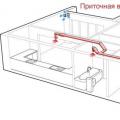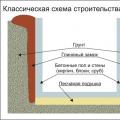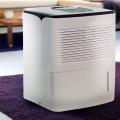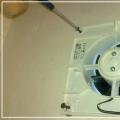The garage is not a living space, so some deviations in standards and assumptions are allowed there. However, the humidity in the garage must always be maintained. If its level is so high that condensation forms on the walls or gates, this is a sign that an urgent need to solve the problem. But even if there is no "dew" inside the garage, it is recommended to check the internal systems to make sure that you are reliably protected from moisture.
Causes
Dampness in the garage is a bad sign that indicates design flaws. Unfortunately, many motorists are faced with this problem, but are in no hurry to solve it. Therefore, it is worth knowing that high humidity in the garage is not only a slight discomfort when you are indoors.
Dampness slowly but surely worsens the condition of the room. Despite the fact that high-quality materials are used during construction, they are subject to corrosion. High humidity in the garage accelerates the process of deterioration of concrete walls, not to mention wooden beams or partitions, if they were used. Mold and fungus appear on the walls, which literally destroy all materials from the inside.
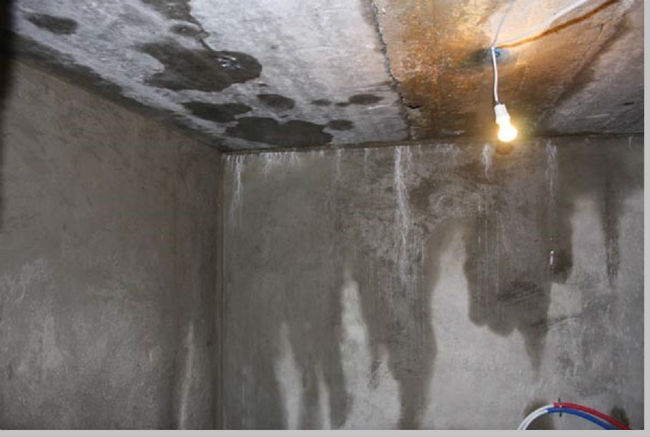
The corrosion of what is in it also depends on what humidity should be in the garage and is in fact. This also applies to the vehicle. Even with proper care, the risk of rust or some kind of malfunction with the automatic system is significantly increased. For a person, dampness, with which no one has fought for a long time, is harmful even with a not too long stay indoors. Evaporation from motor oil and other substances that are needed to keep the car running, as well as the release of mold and fungus, make the air in the garage poisonous, so a person can become ill even after a short stay in the room.
The humidity rate is determined by the temperature in the room, as well as air exchange. For example, in winter, the recommended temperature is +5 degrees and below. The air movement depends on the volume of the garage and the number of cars, but for most it can be indicated as 180 m3 / h.
High humidity in the garage is associated with several aspects:
- Lack or poor ventilation;
- Earthen floor or basement as a conductor of moisture;
- Incorrect thermal insulation or increased heating.
These reasons are the main reasons why the problem occurs, however, dampness can provoke a metal door or a large amount of water inside the garage itself. Depending on the cause, the solutions to the problem will also differ.
Solutions
Dampness in the garage can appear for various reasons, but usually they are associated with the shortcomings of the room itself. In most cases, it is quite easy to eliminate the causes of humidity, and with the right solution, this problem will no longer bother the owner of the car. However, there are construction disadvantages associated with the choice of location. In this case, the microclimate will not be able to correct any modifications.
Ventilation
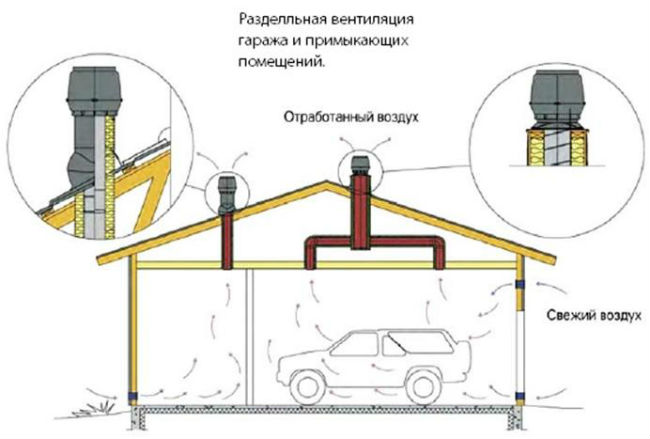
Most motorists maintain normal humidity through natural ventilation. It does not require energy consumption and major modifications. To do this, you need to make 2 holes: one at the bottom near the floor, and the second at the ceiling. The lower pipe will be a supply pipe, as it is responsible for the intake of air from the street. Outside the garage, the pipe must be located towards the ground at a height of at least 20 cm. The upper hole with the pipe for the outflow of air must go to the roof. The longer the pipe, the better the draft will be, and the air output will be better. A good option would be to protect the outlet with a "roof". This slightly increases traction in winter, as it prevents snow from entering.
An alternative would be to install fans powered by the mains. They are also installed one near the floor, the second under the ceiling. The inconvenience of this method is that it is necessary to control the operation of such hoods and independently determine the time for their operation.
Some motorists combine both of these methods, however, in winter, the use of electric hoods leads to hypothermia of the room. However, the method has no other disadvantages, therefore, if there is natural ventilation, installing an additional one will not be a problem.
Waterproofing
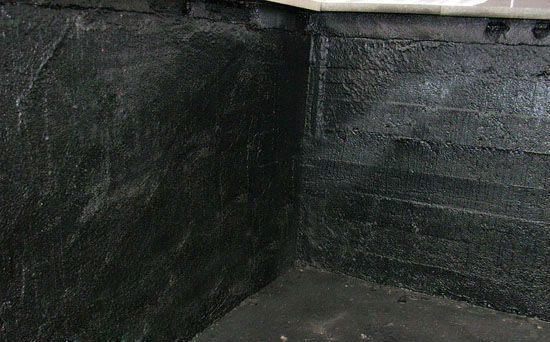
Water enters the garage from below due to problems with laying the foundation, the presence of an earthen floor, a viewing hole or a basement. Most often, motorists take a radical approach to this problem, and use concrete to combat moisture. They fill the basement and the floor completely. This method is not suitable for everyone, so you can simply find places where the foundation is not airtight and cover it with bituminous mastic.
It would be wrong to simply fill the earthen floor with concrete, as it will quickly become covered with cracks and will not solve the problem of high humidity. It is required to "fill" the floor with river sand, which absorbs some of the moisture. It is advisable to alternate layers of sand with expanded clay, and close everything tightly with wooden boards from above.
thermal insulation
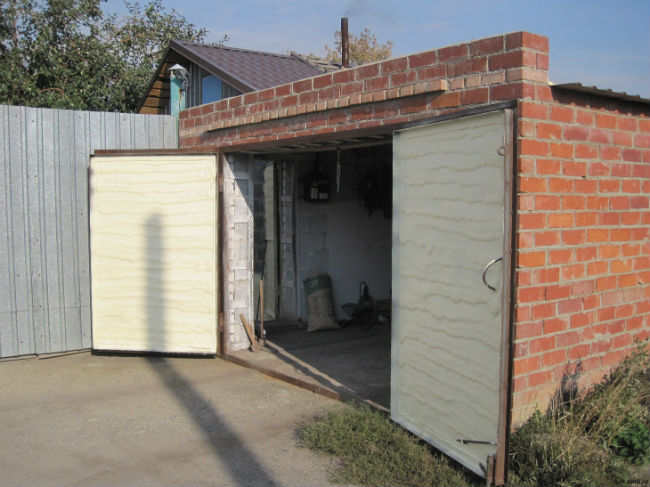
Garage door insulation
Often, condensation in the garage appears due to the temperature difference between indoors and outdoors. This indicates that the room is poorly insulated. In this case, you can remove the problem by carefully processing the room with special heaters. You need to use them around the perimeter: on the ceiling, walls. Do not forget that metal doors also need thermal insulation. To do this, they can be painted on the outside with a special compound and anticorrosive, and inside they can be insulated with wooden boards tightly fitted to each other.
Thermal insulation without flaws will help reduce humidity and make the microclimate in the garage dry, the room will heat up faster and cool more slowly. Periodic heating of the garage in winter is not a mandatory measure, but it will also help keep the garage dry with good natural ventilation. The heater should only operate under the supervision of the owner of the garage. Do not leave it on, as malfunctions can lead to a fire. Humidity can be lowered with additional heating only in winter.
other methods
Optimum humidity in a garage that is well insulated and ventilated is achieved by avoiding the presence of water there along with the car:
- Thoroughly wipe the car from snow and water in bad weather;
- Let the vehicle cool down with the garage doors open;
- Do not wash your car indoors.
Some stores sell special devices to deal with high humidity - moisture absorbing tablets. They are devices with a plastic container where water accumulates and an upper part with a grate. The plastic container is removable, since it is periodically necessary to pour water out of it. As a radical way to get rid of moisture in the garage, they will not work, but it will be nice to use them in dampness, which occurs infrequently. For example, after rain or if the car was not sufficiently cleared of snow.

